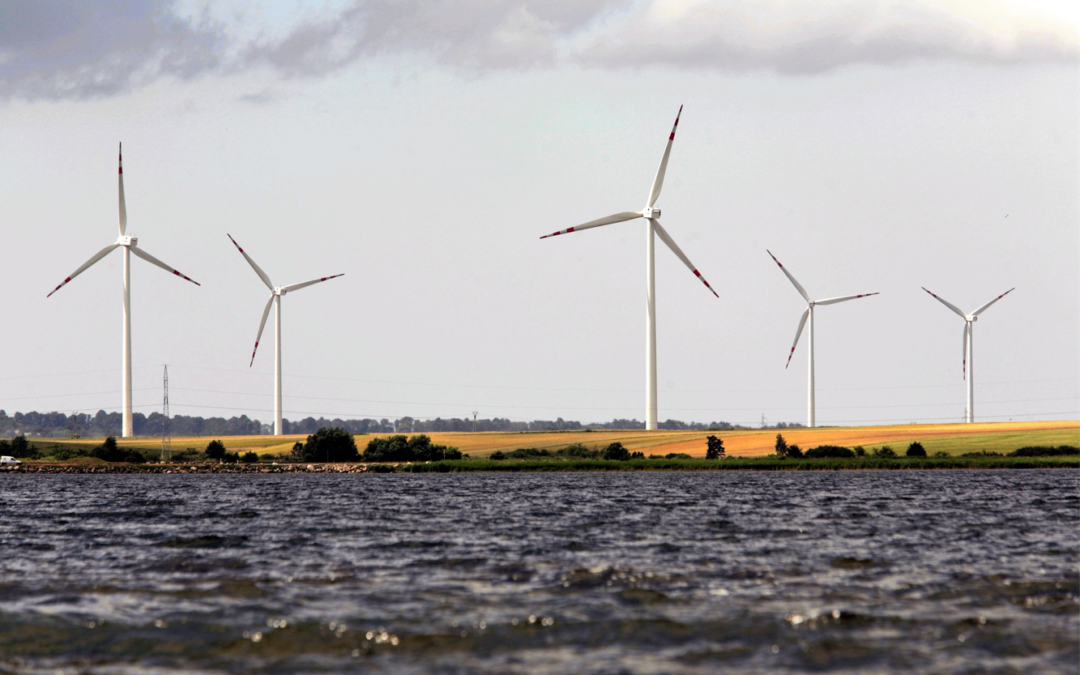The Polish government is moving closer towards undoing a rule it introduced in 2016 that severely hinders the building of onshore wind farms, say three officials. Previously, Poland had been among Europe’s leaders in installing wind capacity, but after 2016 new investment dried up.
However, recent years have seen Poland’s historically coal-friendly ruling Law and Justice (PiS) party increasingly shift towards renewables, as well as nuclear, a process that has been given even greater urgency by the war in Ukraine and resultant push to move away from Russian fossil fuels.
The regulation in question, known as the “10H rule”, forbids the construction of wind farms where there are buildings within a distance of ten times the height of the turbine.
That has resulted in one of the most restrictive regulatory regimes in Europe, effectively making it impossible to build wind farms on 99.7% of Polish land, wrote Włodzimierz Ehrenhalt, the chief energy expert of the Union of Entrepreneurs and Employers (ZPP), in an opinion issued last year.
As a result, whereas in 2015 – the last year before the rule was introduced – Poland installed 1,266 MW of onshore wind capacity (the second most of any country in Europe), between 2017 and 2019 it installed an average of only 34 MW annually.
There has been a slight revival since 2020, and in January this year, a new record was set for the amount of power generated by wind. Turbines supplied around a third of Poland’s electricity needs at times that month. Over the whole of last year, onshore wind provided around 8% of Poland’s electricity.
However, analysts and industry figures say that the 10H rule is still preventing Poland from achieving its full wind potential. In response, the government in May last year published draft legislation that would ease regulations, giving local officials control over deciding the location of new wind farms.
Turbines would still have to be a minimum of 500 metres from existing buildings, but beyond that their location would be set under local development plans. The 10H rule would also be removed in relation to nature protection, reports news website Interia.
“Work [on the bill] is advanced; according to our information, it is planned to come into force in the second quarter of this year,” Aneta Piątkowska, an official from the development and technology ministry, told a parliamentary committee on Friday.
Andrzej Kaźmierski, another official from the same ministry, added that the legislation is “in principle ready” and is now undergoing final legal scrutiny.
In an interview with Dziennik Gazeta Prawna published yesterday, deputy environment ministry Ireneusz Zyska likewise said that the bill was now ready and that he expected it to be discussed soon by the cabinet. Zyska also criticised the delays in processing the legislation.
“I believe that it is a great loss for the Polish economy that the work on this matter is so dragging on and that the 10H rule has not yet been liberalised,” he told the newspaper. “We lose out every day because onshore wind is currently the cheapest way to generate energy.”
Janusz Gajowiecki, president of the Polish Wind Energy Association (PWEA), claims that the cost of generating electricity from onshore wind is between 3 and 3.5 times lower than from fossil fuels.
“Accelerating and enabling new investments in renewable energy…[is] not only a necessity for protection of the climate or an economic opportunity, but above all a necessity from the point of view of Poland’s sovereignty and its national interest,” he said last week.
The Polish government’s current energy strategy foresees renewables accounting for 23% of the country’s consumed energy by 2030, up from 12% in 2019. It has overseen a boom in solar installations and has also encouraged state-owned energy firms to invest in offshore wind in the Baltic Sea.
Main image credit: DAMIAN KRAMSKI / Agencja Wyborcza.pl

Daniel Tilles is editor-in-chief of Notes from Poland. He has written on Polish affairs for a wide range of publications, including Foreign Policy, POLITICO Europe, EUobserver and Dziennik Gazeta Prawna.



















